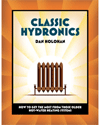
Right
now, water shortages continue to impact only random pockets of the country.
For the most part, the United States has been blessed with ample water resources and reliable water infrastructure. However, there are ominous signs this may be coming to an end.
Although experts do not predict dire water shortages as have been experienced in some parts of the world, much of America is likely to have severe water problems in the future, which may cause serious personal and business challenges and have negative economic implications.
What is considered the most severe water crisis in U.S. history occurred in the 1930s and is commonly referred to as the Dust Bowl. It affected the Great Plains (mainly Texas, Oklahoma, Colorado, Kansas and New Mexico) and was the result of many factors, including poor land use and soil-management practices that occurred in the 1920s. Complicating matters is the fact it began at the peak of the Great Depression, at a time when state and federal funds were limited and often tied up with relief programs for urban dwellers rather than those living on farms.
But the root cause of the problem was drought.Siegfried Schubertof NASA’s Goddard Space Flight Center says, “The 1930s drought was the major climatic event in the nation’s history.”
He and his colleagues conclude that it occurred because of cooler-than-normal tropical Pacific Ocean surface temperatures combined with warmer tropical Atlantic Ocean temperatures that turned America’s breadbasket into a dust bowl from 1931 to 1939.
Since then, there have been other water shortages, sometimes in traditionally water-rich areas of the country. But instead of affecting large geographical areas as the Dust Bowl did, they have tended to focus on just one area or small parts of the country at a time.
For instance, in the late 1970s, much of California was gripped with a severe drought. Although it lasted only about a year, it was so extensive that it introduced the concepts of graywater gardening and “Navy showers” (turning the water on and off at various times of the showering process) to millions of Californians. Residents quickly adhered to the now-famous mantra: “If it’s yellow, let it mellow. If it’s brown, flush it down.”
The most recent great drought in the United States occurred in Atlanta and other parts of the Southeast. Beginning in late 2007, an unprecedented shortage forced some of the region’s largest cities to declare water emergencies. Officials in Atlanta, where rainfall totals were nearly 20 inches below normal, found that by December 2008 the city was just days from running out of water entirely. Fortunately, 2009 brought with it nearly three months of solid precipitation, ending what was probably the worst water shortage to affect the region in modern history.
So where do we stand today? What should commercial engineers and contractors know about water, water conservation, and how to build and operate facilities in a more water-responsible manner? The following five items should address these and other water-related questions.

The use
of green fixtures is one way to help lessen the demand for water. Photo
courtesy of American Standard.
First, we must recognize that the United States is facing a severe water infrastructure problem and - just as with water problems in general - this is not a local or regional problem, but one that is affecting the entire country. According to a March 2010New York Times’article, water infrastructure is breaking down to the point that “a significant waterline bursts on average every two minutes somewhere in the country.”
The article also states that many of these waterline bursts not only disrupt water service to millions of people and waste millions of gallons of water, but also damage streets and homes and cause dangerous pollutants to seep into drinking water supplies. The problem is that in both good and challenging economic times, major water infrastructure projects have been delayed. Quick repairs, even if frequent, are more economical in the short term than a total revamping.
However, quick repairs may no longer be possible because some of the water infrastructure in the United States dates back to the Civil War era. And several state and federal studies indicate thousands of water and sewer systems may be too old for further repairs.
2. Shortages and Droughts
Many people question whether there really is a water shortage problem developing in the United States.
Right now, water shortages continue to affect only random pockets of the country, such as Las Vegas, Atlanta, parts of the Southwest and California. They do not affect the entire country at once as gas prices do. As a result, water conservation does not get as much national attention.
However, our demand for water is exceeding supply. Watersheds are storing less water than they have in past years. It is so bad in some areas that even a small imbalance, such as an unusually dry year, can become a crisis.
As to the prospects of droughts that may affect the entire country, a report issued in June 2008 by the U.S. Climate Change Science Program says weather conditions in the United States are changing significantly. The report states less precipitation will occur in the future, and while there will also be periods of “extreme” downpours, these will not alleviate the drought problems in the long term.
3. Rising Water Costs
As the demand for water goes up and localities invest more in water infrastructure and search for more water supplies, costs will likely increase. We are already seeing this happen around the country. For instance, Harrisburg, Pa., a traditionally water-rich area, is instituting a “mitigation fee” starting next year to fund water storage programs and find new water supplies. One of the area’s biggest employers, Procter & Gamble, expects its fee will be in the $10,000 range, on top of the thousands of dollars the company already pays for water.
Similar charges are being instituted around the country. Schools and medical facilities are big water users and will be hit hard by these new fees. This means that the illusion of plentiful water will be ending soon for these and other facilities. Even in California, which has been plagued by water problems for decades, water and sewage prices are still fairly low. However, they are expected to increase substantially in the next few years.
4. What Engineers and Contractors Can Do
As grim as things may seem, a law of life and business will help address our water problems: “For almost every problem there is a solution.” One of the first steps engineers and contractors can help their clients with is to perform a water audit. This process includes steps such as collecting past water bills, analyzing employment records (if more people are working, more water is being used), checking plumbing diagrams or architectural drawings, investigating cooling towers and boilers, and checking for leaks and old restroom fixtures.
If a manufacturing facility is being audited, establish where water is being used and why it is being used. In one location, water systems were still releasing water to manufacture a specific product although the product and that portion of the factory had been closed for several years.
In terms of aging fixtures, toilets and urinals manufactured before 1992 should be replaced with low-flow or, for greater savings, no-flow fixtures such as waterles urinals. A typical urinal uses about 40,000 gallons of water per year. If a facility has 50 urinals, that’s up to 2 million gallons of potable water flushed down the drain.
The Medical University of South Carolina installed four waterless urinals and estimates it now saves more than 160,000 gallons of water per year.
5. Less Water for Landscaping
Many facilities are adopting a type of landscaping design called xeriscaping, which involves particular attention to soil selection and preparation, selection of plants native to a given area, use of mulches and efficient irrigation systems and proper maintenance among other measures. Many facilities find they can easily reduce water use by as much as 20% by xeriscaping. The MGM Grand in Las Vegas converted to this type of landscaping and now saves 40 gallons of water per square foot of landscaping per year.

Klaus Reichardt, founder
and CEO of Waterless Co. Inc.
Emotions and Water
A discussion of the water challenges facing our country is not complete without mentioning that water problems can become an emotional issue.For instance, people in Colorado and other Rocky Mountain states are upset about how California is draining more and more of their water supplies. We also saw emotional charges from cities neighboring Atlanta during its drought.
Additionally, some communities get upset because other areas of the country are simply not doing their part to efficiently manage water use.
Most likely, the only way to address the emotions tied to water as well as our overall water problems is for the federal government to get more involved with the problem and make water use and water infrastructure improvements equitable throughout the country. This may not sit well with those already upset about the federal government’s growing role in our business and personal lives.
Commercial contractors can contribute enough solutions to the problem to calm nerves as they are called upon to address our many water challenges.




